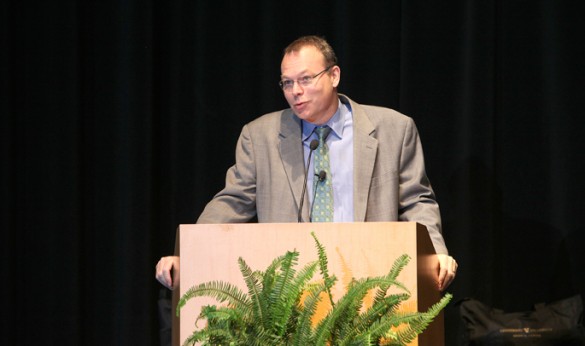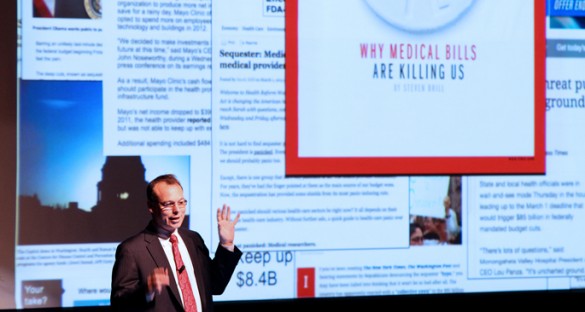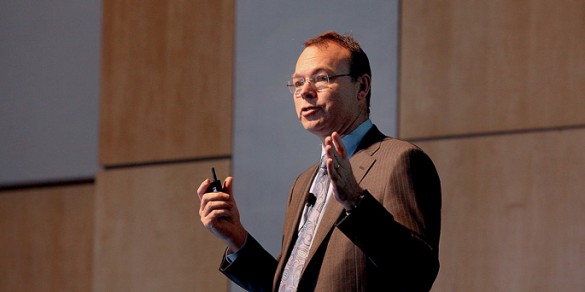
As medical centers across the country respond to declining revenue streams and a federal budget crisis, focusing on the quality of the patient experience becomes ever more important.
Jeff Balser, M.D., Ph.D., vice chancellor for Health Affairs and dean of the School of Medicine, said at last week’s Winter 2012 Clinic
al Enterprise Leadership Assembly that efforts to reduce operational costs across the enterprise are on track to achieve $45 million in new savings by the end of the current fiscal year.
Balser heartily thanked members of the audience for their continuing efforts to strategically improve cost effectiveness in ways that don’t sacrifice quality, but truly enhance the quality of care.
Substantial operational cost reduction at VUMC is not merely a hedge against a rainy day. Given the current winds of change in health care, operating more cost effectively is a necessity. The leadership outlined reimbursement changes coming in the new calendar year that are unfavorable for academic medical centers, including VUMC.
In the prior week, C. Wright Pinson, MBA, M.D., deputy vice chancellor for Health Affairs and CEO of the Vanderbilt Health System, traveled to Washington, D.C., for meetings with members of Tennessee’s legislative delegation.
“I did not come home thinking, ‘we are overstating the case.’ We have to keep embracing change. It is absolutely necessary,” he said.
Change efforts will not focus exclusively on cost reduction, but on improved value and service — all powered by innovation.
For example, Balser outlined upcoming efforts to improve the experience for patients and their clinical teams through implementation of a combination of clinical workflow improvements accompanied by enhanced information technology tools to fundamentally improve the patient experience, from patient intake to follow up.
He stressed that, as VUMC’s affiliate network continues to grow, a key element to success will be to deliver an extraordinary patient experience, the highest expression of our Vanderbilt culture, “wherever Vanderbilt goes.”
Pinson delivered a quarterly update on pillar goals in Service, Quality and Innovation, as well as employee retention. Details are available on the elevate website.
He highlighted several achievements, including steeply reduced staff turnover in Labor and Delivery and markedly improved patient satisfaction scores at Vanderbilt Heart in Murfreesboro.
Pinson also announced the Vanderbilt Anticipatory Care Team (VACT), a quality improvement initiative using information technology to aid continuity of care and enhanced communication across patient care settings. VACT will soon enter the pilot phase on two inpatient units.
Pinson closed with a “Top 10 List” of recommendations to all clinical enterprise leaders:
1. Partner with Human Resources consultants to determine the causes of voluntary employee turnover trends.
2. Use the new access dashboard to identify causes of delays for new patient appointments.
3. Partner with service coaches to understand patient perceptions based on survey responses.
4. Emphasize customer service skills when answering the phone.
5. Attend “Service Focused Between the Quarters” training to understand the patient’s perspective.
6. Wash your hands or Foam In/Foam Out
7. Anticipate your patient’s needs before they leave the hospital.
8. Reconcile medications for each patient, every time.
9. Continue focused Expense Control habits.
10. Get your flu shot.















